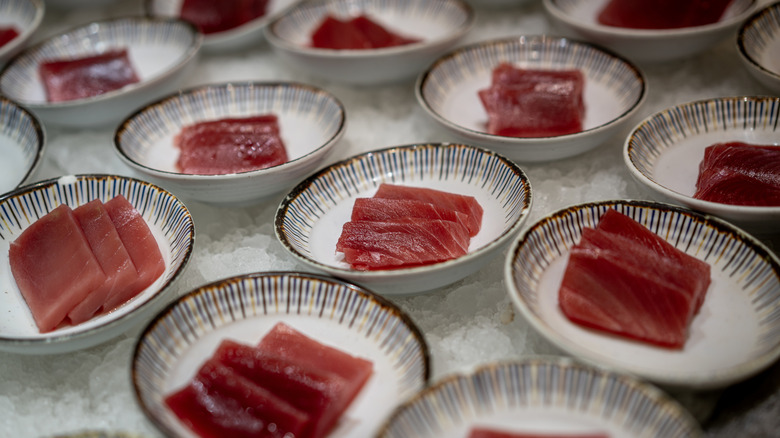The Kind Of Tuna You Should Always Avoid Buying At The Supermarket
The supermarket is like a candy store for adults, but with endless shelves of necessities and glorious amounts of goods. However, that doesn't mean you have to fill your cart to the brim without considering quality. In fact, not avoiding certain products might do more harm than good. When tuna is cheap, for instance, it should be a tip-off to think twice before taking it to the checkout.
Chowhound spoke with Maricel Gentile, executive chef and owner of Maricel's Kitchen and chef ambassador for K-Seafood USA, and we learned that there are different types of seafood to avoid buying at the grocery store. Maricel says, "a big red flag is if the seafood is too cheap, as that usually means it is mislabeled or has not been procured through proper channels and practices." Rather than appreciating a good deal, think about it for a second — for one, it might not actually be tuna, but escolar and just labeled as such. It's also possible it might not be sourced ethically. Tuna costs around $4.63 to $38.96 per pound, so if it's leaning towards the cheaper end of the spectrum, it's usually a sign to avoid it entirely.
The telltale signs of good tuna
There are different ways to gauge if the tuna is worth buying aside from the price tag, but it's important to know how you're consuming it first. If you plan on eating it raw, check if it's high in fat. Similar to the marbling in steak — an indicator of how juicy it can be — a good piece of tuna should also have a gorgeous display of it just under the skin. It should also have a sticky, glossy appearance that comes in a red hue. It's important to note, though, that some people use carbon monoxide treatments on tuna to maintain its bright color — even when it's no longer fresh, the color stays the same.
Meanwhile, if you're planning on making a mouthwatering tuna steak, it's perfectly fine if the color appears darker; it's safe to consume as long as it's cooked. Tuna meant for cooking is also not as sticky as the higher grades you can enjoy right away, without any preparation. Ultimately, if you're in doubt, it's best not to buy at all. While it's not the same as buying fresh, sometimes, opting for canned tuna and elevating it using kitchen tricks is far wiser than buying cheap seafood.

